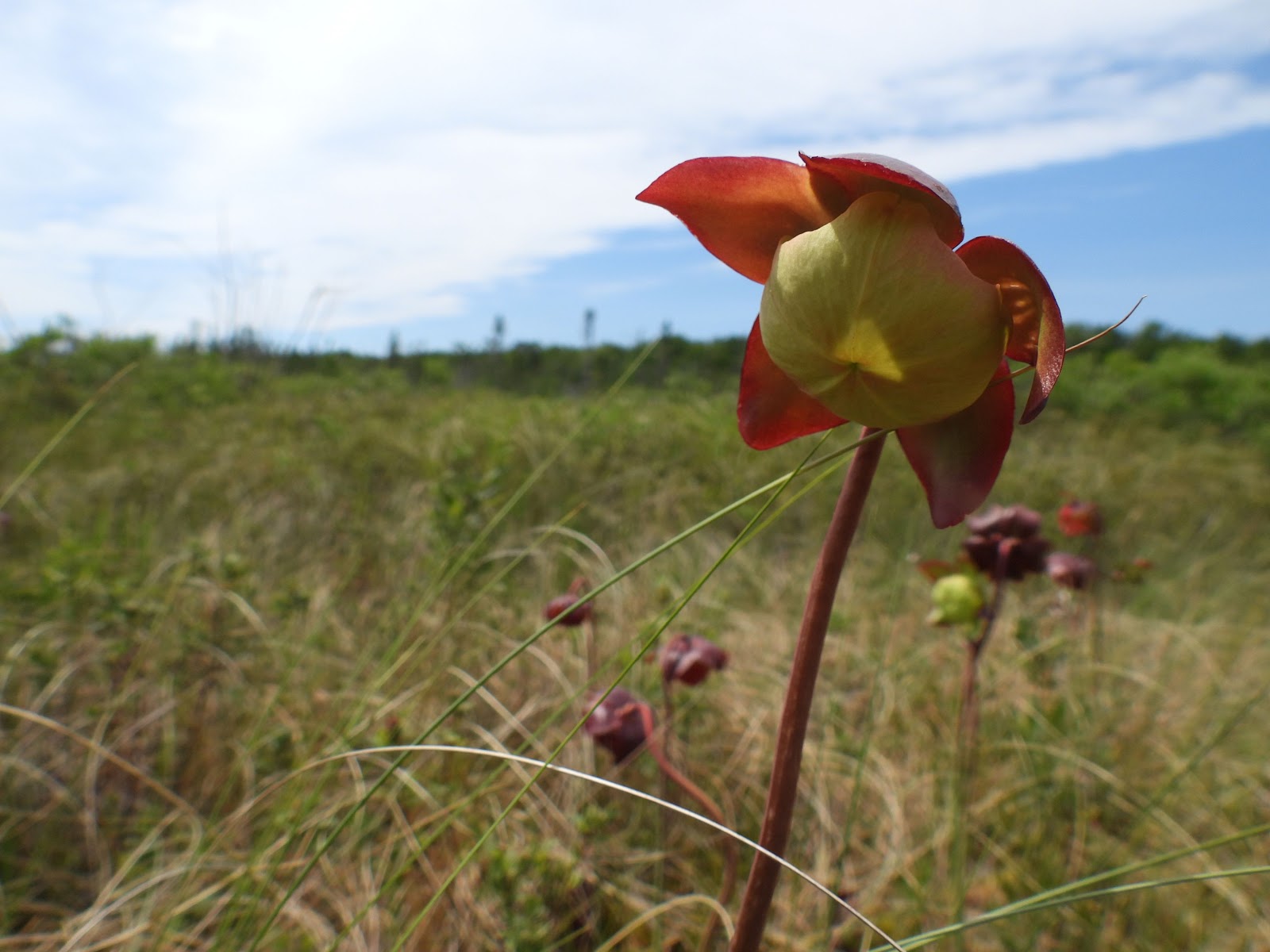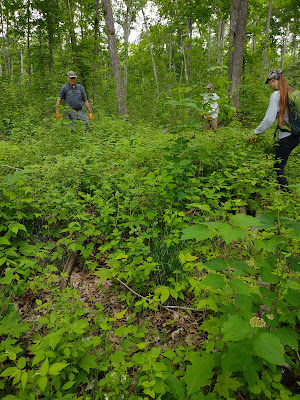Upon spotting the green dragonfly resting close enough for me to capture, I knew I had to try. With my kayak nestled into the grassy bank of the Namekagon River, I snapped a few photos of my target and began to reach my hand out slowly. But when my fingers gently grasped the dragonfly, I was horrified to find that it was squishy rather than the typical hard feeling of an exoskeleton. My hand shot back to my side in an instant, repulsed. My first thought was that the dragonfly was dead and waterlogged.
Not interested in a squishy, dead dragonfly, my attention drifted and I let myself be absorbed by the scenic setting of the Namekagon River. It wasn’t until my eyes meandered back over to the dragonfly that I realized they had moved! Rather than being lower on the blade of grass, they were now several inches higher.
My curiosity piqued, I inched my kayak closer. That’s when I spotted the brown, empty shell of the nymph’s exoskeleton. Beginning to put the pieces of the puzzle together, I realized the dragonfly that I had tried to capture was a freshly emerged adult who had just burst out of their final molt!
 |
| A teneral boreal snaketail dragonfly, freshly emerged. |
Using a dragonfly guide book, I keyed in on the bright green coloration, and club-shaped abdomen, identifying the dragonfly as a boreal snaketail. These dragonflies are found near cold northern streams and rivers, and males can be spotted flying up and down the water, patrolling their territory.
The boreal snaketail’s aquatic life started when an egg was deposited into the Namekagon River by a female dragonfly tapping her abdomen on the top of the water as she flew by. The snaketail’s egg sinks through the water, and settles into the riverbed. Days later, a small nymph hatched out of the egg. Most of their life was spent as a nymph, swimming through the water looking for their next meal. In general, dragonfly nymphs are voracious predators, eating zooplankton, aquatic invertebrates, and even small fish!
A key part of a dragonfly nymph’s success as a tiny-but-mighty aquatic predator is their extendable hinged jaw, or labium. Think of it as an extra arm that shoots out to snatch prey before bringing it to their mouth. If that’s not cool enough, the labium is hydraulically powered! To propel their deadly grabber, a nymph draws in water through their body and compresses their abdomen, creating pressure that pushes out their labium in a matter of milliseconds, snatching prey as they swim by.
The nymph's ravenous appetite fuels their growth. This causes them to molt multiple times–shedding their exoskeleton as they grow bigger and bigger, much like a kid who keeps outgrowing their clothes. Depending on the species, a dragonfly nymph undergoes between five to fourteen molts before finally emerging as an adult. When they are ready to begin their transformation, the nymph makes their way to the edge of the water, scouting for a place to emerge. Once they have found a suitable location, they’ll sit in shallow water for several days, poking their head above the water as their body changes inside their exoskeleton, slowly shifting to breathing air.
Emergence–the act of a nymph transitioning into an adult dragonfly–begins as the nymph grabs vegetation and hauls themself above the water. Once in position, they hook into their perch with their forelegs, and begin to transform. The skin behind their head splits first, letting their thorax push through. As the crack travels farther down their back, the head, wings, legs, and part of the abdomen are pushed out. Now only attached to their old exoskeleton by their abdomen, they take a break, waiting for their new body parts to harden. Grabbing their old exoskeleton, they pull their abdomen free, and shed their final connection to their life as a nymph.
These newly emerged adult dragonflies are called tenerals, and are very susceptible to predation. Their wings are shiny and new, but lack fully developed wing muscles, hindering their ability to escape predators. Birds are the main predator of ternal dragonflies, but even rainfall or strong winds pose a threat to their still-hardening exoskeleton. Regardless, they take off in a weak flight, eating as many insects as they can. It takes roughly a week for them to gain their adult colors, strong flight abilities, and a fully hardened exoskeleton. Once they are a full adult, they are incredible aerial predators who catch their prey 95% of the time!
Not wanting to disturb the teneral boreal snaketail dragonfly more than I already had, I continued down the river. My mind was swimming with excitement around witnessing the boreal snaketail’s emergence. I was privy to an intimate part of an animal's life, and I could not be more grateful for this moment.
For more than 50 years, the Cable Natural History Museum has served to connect you to the Northwoods. Our Summer Calendar is open for registration! Visit our new exhibit, “Becoming the Northwoods: Akiing (A Special Place). Follow us on Facebook, Instagram, YouTube, and cablemuseum.org to see what we are up to.





























